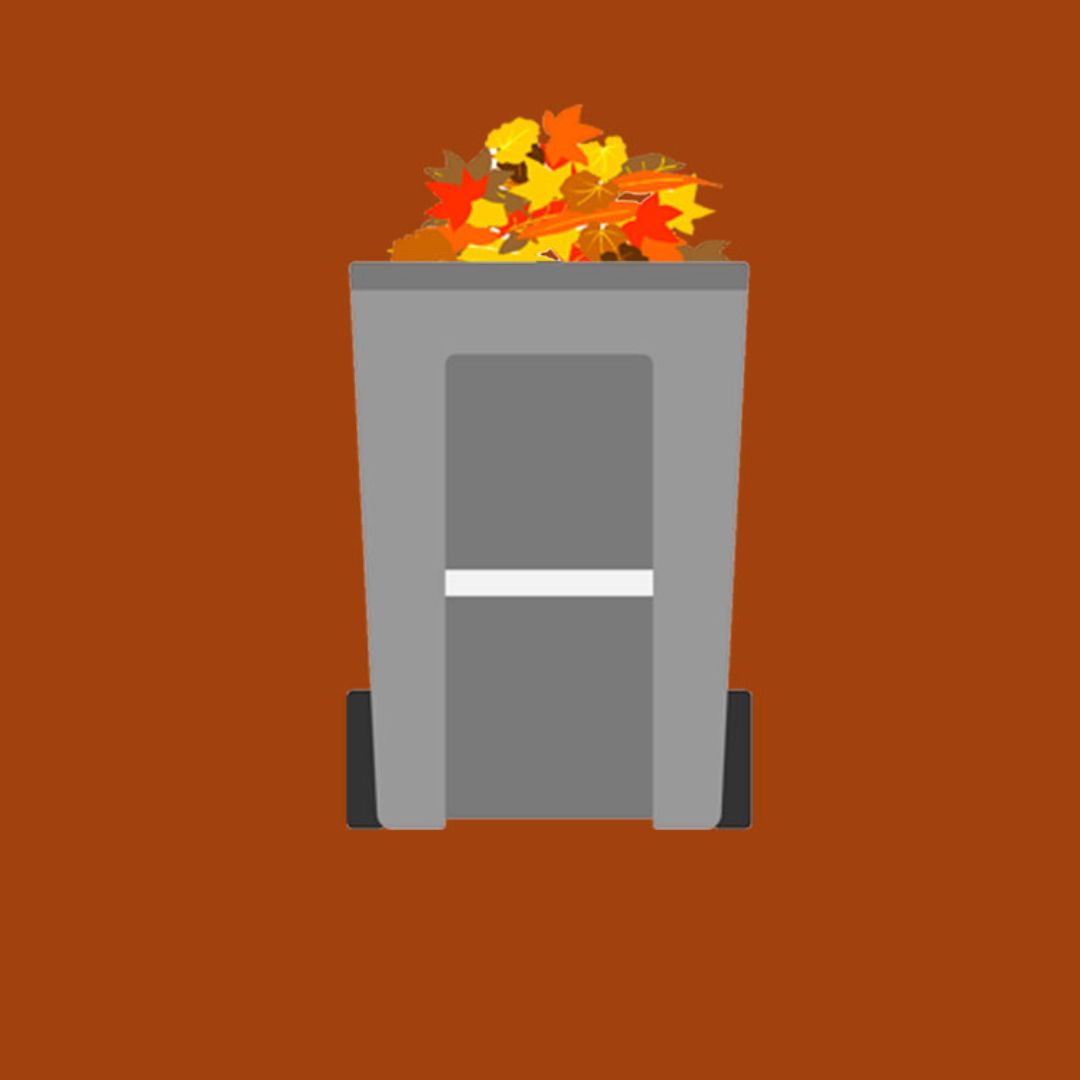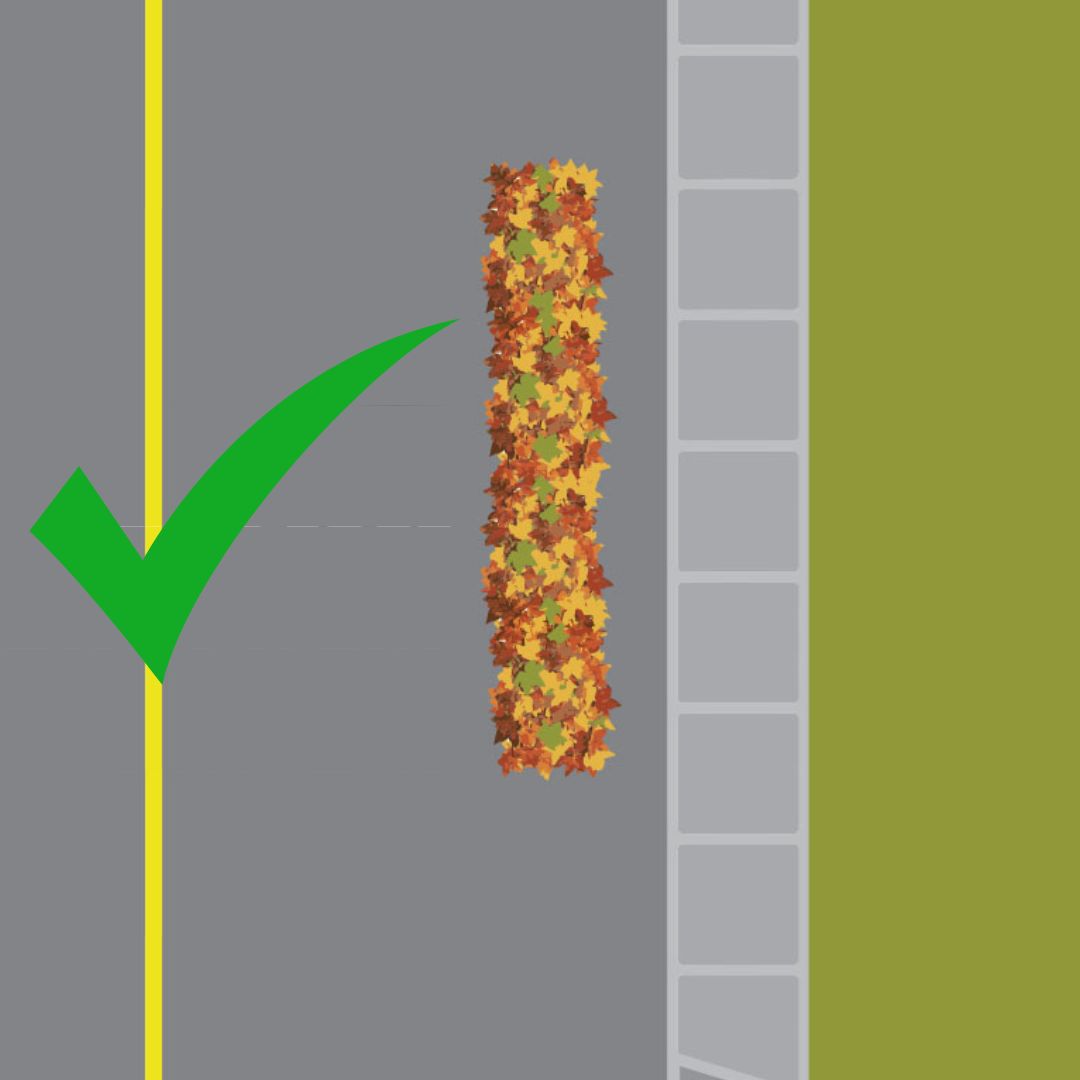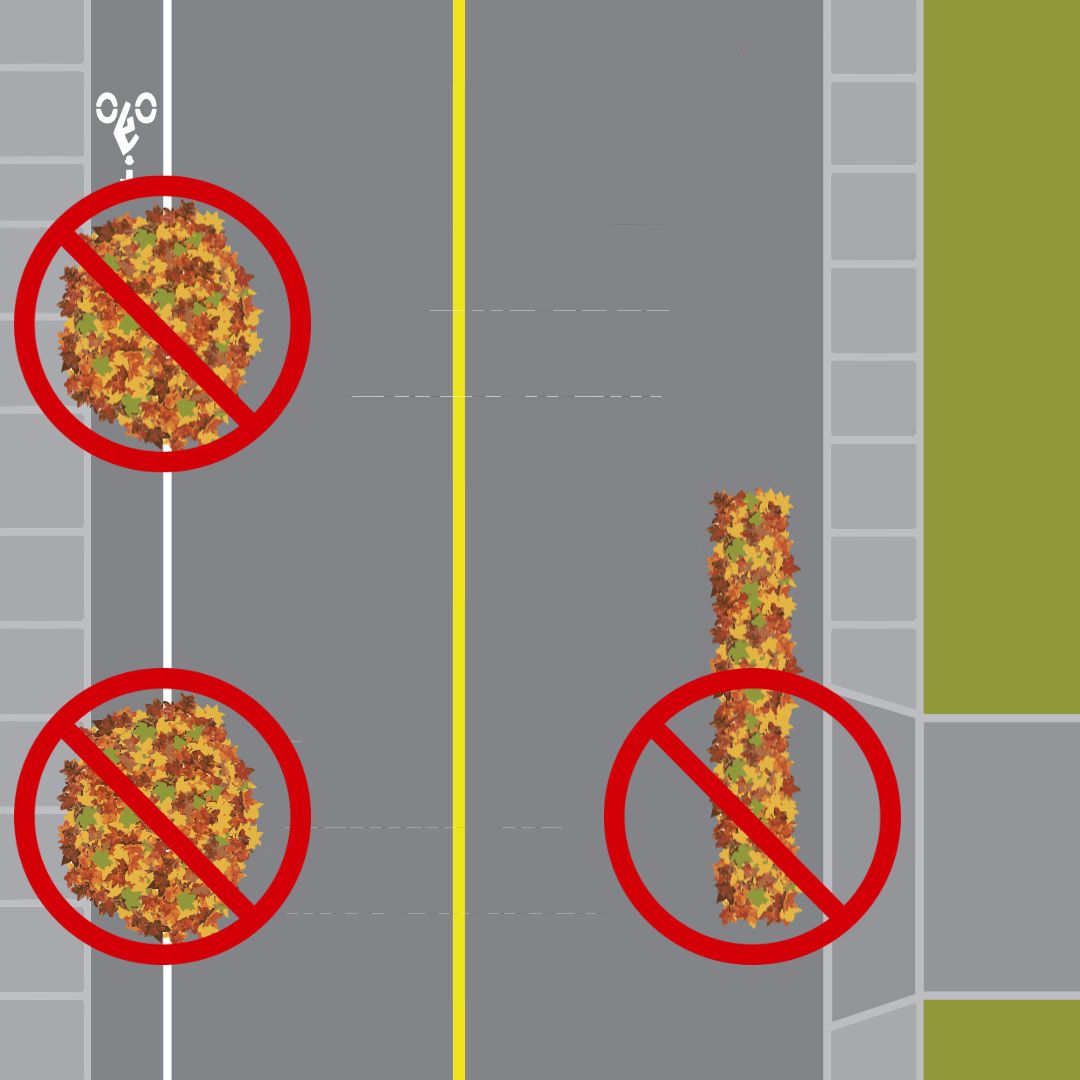Snow and Ice
While significant snowfall is uncommon in Albany, even small amounts of snow (and ice) can cause problems getting around town.
The City of Albany does not own snow removal equipment. Instead we work with our agency partners to maintain passable roads during snow events in a safe and cost-effective manner. The Oregon Department of Transportation (ODOT) assists in keeping the highways and bridges clear on I-5, US Hwy. 20, and Oregon Hwy. 99E.
On the 350 lane miles* of Albany streets, the Linn County Road Department and Benton County Public Works Department help plow priority routes. City street maintenance crews are on duty (sometimes around the clock) sanding at major intersections, depending on the event. Sanding helps break up packed snow and keep major travel routes passable.
Stay in the know
Depending on the severity and length of a snow or ice event, the City of Albany will use a variety of means to communicate, providing information and/or phone numbers for street/road conditions around the area and state. This will be accomplished through one or more of the following methods:
- City web site, cityofalbany.net (You are here!)
- City of Albany social media pages (some departments have secondary pages but they may not always have the most comprehensive information in a citywide event):
- AlbanyAlerts, powered by Everbridge
- Local media reports
What you can do
Albany community members are asked to support the efforts of our partners' snow and ice control operations. You are requested to remove any parked vehicles, boats, and trailers from city streets, especially on key routes. This will allow snowplows to clear the streets quickly and with fewer passes. Keeping vehicles off streets will also improve accessibility and minimize the risk of damage to private property from vehicles losing control on slick surfaces.
The City or its agency partners will not be responsible for damage or blockage of vehicles parked on the street, including vehicles that are isolated by snow piles during plowing operations. All garbage and debris recycling containers set out for collection should be kept behind the curb or in residential driveways at all times. Public Works is not responsible for damage to privately-owned landscaping or structures, including but not limited to fences, signs, curbs, and wires that are installed within the public right-of-way.
Snow removal by property owners or occupants should not be stacked or stockpiled over catch basins or the ends of culverts. Rapid warming or thawing could overload drainage facilities, causing local flooding and/or possible property damage. City staff will clear blocked catch basins and culverts as storm response circumstances allow.
Be prepared
The City does not guarantee that streets will be free of snow and ice after plowing and/or sanding. Ultimately, it is each resident’s responsibility to ensure that they can travel to and from their homes if necessary during winter events. Bare, dry pavement should not be expected and residents are asked to do the following:
- Drive only when necessary and plan for delays. More vehicles cause more congestion, delays, and unnecessary accidents.
- Be patient and courteous to other drivers. Slow down when traveling in hazardous conditions. Most accidents occur because the driver is going too fast for the weather conditions.
- Carry traction devices. Drivers should ensure their vehicles have appropriate traction devices for the existing conditions and for the type of vehicle being used. Traction devices should be installed prior to driving during snow/ice events.
- Consider using public transportation. Albany Transit System and Linn-Benton Loop buses may operate during inclement weather and can maneuver through snow and ice more easily than most lightweight personal vehicles. Be aware that it is likely that buses will experience delays, depending on specific road conditions.
- To obtain additional travel tips and information, visit ODOT's winter driving page.
*One mile of street with curbs and gutters on both sides equals two lane miles.
- Details
Slurry Seal
What is Slurry Seal?
What is Slurry Seal?
Slurry seals are a cost-effective option for improving and protecting the asphalt pavement on local streets. A slurry seal is a thin asphalt surface treatment that seals small cracks and restores the pavement surface. They are generally applied to residential streets with lower traffic volumes that are still in good condition. Streets that are going to receive a slurry seal treatment are typically crack sealed prior to receiving a slurry seal. Slurry seals provide a cost-effective way to extend the life of our Albany streets.

How does the City decide which streets receive slurry seal each year?
Streets are prioritized based on their pavement condition. The current priority is to slurry seal the backlog of newer local streets between 10 and 20 years old that have never received a slurry seal. Typically, streets are grouped together to reduce construction costs and impacts to adjacent properties.
2025 Schedule/Map
2025 Schedule/Map
Work is expected to start in August 2025 in the areas noted below. A tentative schedule is coming soon. Streets are striped shortly after they are treated.
Areas:
What to Expect During Slurry Seal
What to Expect During Slurry Seal Work
Before work starts
You will receive additional notice from the contractor approximately 48 hours prior to the start of work on your street. No parking signs will also be posted in advance of the work. In the event the weather forces a cancellation, your street will be rescheduled, and you will be re-notified. We will schedule the work to avoid slurry seal application on garbage days but unfortunately access for other services will be impacted during the installation and curing process until the street is open to traffic again. The post office will be notified of the schedule. In an emergency, access for emergency vehicles will be allowed regardless of status of street closure.
During the work
Streets receiving a slurry seal application will be closed for one day from 8:00 a.m. to 5:00 p.m.
Please remove all vehicles and objects (garbage/recycling/debris containers, basketball hoops, etc.) from the street by 8:00 a.m. on the scheduled day and park all vehicles needed during the street closure hours outside the no parking area of the project. If slurry seal application is scheduled on your regular garbage pick-up day, please place your containers on the street the night before for regular garbage pick-up.
Vehicles will not be able to enter or exit the project area once slurry seal is applied. Vehicles parked on the streets after 8:00 a.m. will be towed so that work may proceed.
After the work is over
After completion of the slurry seal, it is normal to see sand shed from the slurry seal. This sand will likely accumulate on the side of the street and be swept up by the contractor and regularly scheduled monthly street sweeping. You may also notice scuffing or even some material picking up in the street as you turn in and out of your driveway. This is normal and expected to occur as the slurry continues to cure over the first month or two after application.
Questions?
If you have any questions, please email us at
- Details
Fall leaf pickup (Oct.-Dec.) from Republic Services
Republic Services picks up leaves in Albany on paved public streets with curbs and gutters.
- You can use your organics cart to dispose of leaves on a weekly basis.
- If you have surplus leaves for pickup that don't fit in your organics cart, rake them into long, narrow rows in the street two feet away from the curb before the first day of each pickup period.
- Leaf piles must not block storm drains, driveways, or bike lanes.
- Republic Services 2025 Leaf Pickup periods (may not align with your regular weekly pickup day): October 20 – 31, November 3 – 14, and December 1 – 12. Check Republic Services' Event Calendar for up-to-date information.
- Additional questions?
- Visit the Republic Services office at 1214 Montgomery St. SE, Albany, OR, 97322, and speak to someone in person.
- Email
This email address is being protected from spambots. You need JavaScript enabled to view it. - Calls to the Republic Services number (541-928-2551) are regularly routed to their Arizona call center.
Toss your leaves in your organics cart first for weekly pickup along with other yard debris and food waste.

Rake surplus leaves into long narrow rows in the street two feet away from the curb before the first day of each pickup period.

Rows must not block storm drains, driveways, or bike lanes.

Leaves left near stormwater drains create hazards and pollution
Leaves piled on or near stormwater drains or planters can make rainwater pool on streets, creating unsafe driving conditions such as flooding and slippery surfaces. Putting leaves directly into storm drains pollutes waterways, harming fish and other wildlife. Please wait until the beginning of each collection period to move your leaves into the street.
Help prevent flooding, keep waterways clean, and make streets safer for bicyclists and drivers:
- Place as many leaves as possible in yard debris carts or compost bins or piles.
- Rake remaining leaves into the street without blocking drivers’ visibility or bike lanes.
- Piles should be long, low, narrow piles two feet from the curb.
- Keep leaf piles away from storm drains and stormwater planters to prevent clogs and flooding.
- Call Public Works at 541-917-7600 if you see flooding or a storm drain that is clogged.
- Details
Street Closures
Report street hazards in the City of Albany
Street hazard reporting form or call 541-917-7600
Other road closure information
Click on a point on the map below for more information about each closure:
- Details

Roundabouts in Albany
A modern roundabout is a circular intersection without traffic signals, engineered to keep traffic moving smoothly and safely.
In Oregon, the cities including Portland, Bend, and Corvallis have installed several roundabouts and plan for more. In the cities and towns where roundabouts are used, drivers praise them for the increased capacity and safety they provide, along with traffic calming and aesthetic benefits. Studies done in the U.S. show that after converting more traditional intersections to roundabouts, total crashes declined by 39%. Injury crashes declined by 76%, and serious injury or fatal crashes dropped by 89%.
North Albany Road/Gibson Hill Road
Albany’s first modern roundabout is its smallest with a radius of 104 feet. The size was influenced by topography and to discourage big trucks from using Gibson Hill Road and the intersection as a cut through route. The roundabout was built when North Albany Road was extended to the north. The City chose a roundabout instead of a traffic signal to reduce potential crashes and because of steep grades at the intersection. The road there has a history of ice in winter. With a traffic signal, stopping and starting with ice on the slope would have been difficult. Since it was installed, this roundabout has had fewer and less severe crashes than similar busy intersections with traffic signals.
Knox Butte Road/Timber Ridge
Albany’s largest roundabout has a radius of 160 feet. It provides vehicle access to Timber Ridge School and a pedestrian route between the new school and residential neighborhoods to the south. The City considered safety and cost before choosing a roundabout here instead of a traffic signal. Fewer crashes occur in roundabouts, and in this case construction cost was also less. The Timber Ridge intersection is between a curve in Knox Butte Road and Truax Creek. A traffic signal would have put the intersection closer to the creek and required a wider bridge with turn lanes.
Main Street/Salem Avenue
Albany’s newest modern roundabout has a radius of 130 feet and was built to address ongoing safety and congestion at the intersection. The City had considered a traffic signal and a wider road there earlier, but chose a roundabout to reduce crashes, improve traffic capacity and flow, use less space and right of way, and for lower construction costs.
Using a roundabout
Passenger Vehicles
- When approaching the roundabout, follow the lane designation signs, slow down, and yield to pedestrians in crosswalks.
- Look to the left. Traffic in the roundabout has the right-of-way.
- Approach the yield line and enter the roundabout when there is an adequate gap in the circulating traffic flow.
- If another car is waiting at the yield line ahead of you, do not stop in the crosswalk. Keep the crosswalk clear for pedestrians.
- Bicyclists are permitted to ride in the roundabout and will be riding in the lane just as other vehicles do. Please do not pass a bicycle in the roundabout.
- Proceed counter-clockwise to your exit. You now have the right-of-way.
- As you approach your exit, turn on your right turn signal.
- Exit the roundabout, yielding to pedestrians in the crosswalk.
Trucks
- Drive on the roadway; large trucks and trailers may use the concrete truck apron to negotiate the tight turning radius.
- Drive (usually with just the rear wheels) on the raised concrete of the truck apron to navigate more easily.
- Cars should not use the truck apron.
Bicycles
- If you are comfortable riding in traffic, take the lane and circulate like you are a vehicle, making sure you yield to traffic in the circle when you enter.
- Ride at the speed of the circular roadway (about 15 to 20 mph) to discourage cars from passing you.
- When you exit the roundabout, use your right hand signal.
- If you are unsure about using the roundabout, dismount and walk your bike as a pedestrian at the designated crosswalks. When on the sidewalk, always yield to pedestrians.
Pedestrians
- Stay on the designated walkways at all times.
- Cross only at the designated crosswalks.
- Never cross to the central island.
- Watch for cars; you have the right-of-way, but your best protection is your own attention.
- Cross in the crosswalk one lane at a time, using the splitter island as a refuge area before crossing the next lane.
Other useful sites
- How to drive in a roundabout (ODOT)
- How to drive in a roundabout (DOT of New York)
- Details




